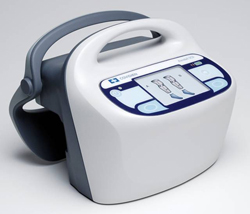

When asked what precautions people who travel a lot should take to reduce their risk of DVT, Dr.

The good news is that there are simple things you can do to stay healthy on your trips. But all that travel can have a downside if you don’t move enough. Although the reasons why being overweight increases DVT are not totally clear, there is strong evidence showing that the risk of DVT increases as a person’s weight increases. According to a study published in May 2015 in the Journal of Internal Medicine, there is a relationship between obesity and the risk of DVT. “If there was no obesity in the world, venous thromboembolism rates would plummet,” says Mary Cushman, MD, a hematologist at the University of Vermont Medical Center in Burlington and the medical director of its thrombosis and hemostasis program. Being Overweight and Not Physically Active That’s because moving increases blood flow and, in turn, reduces your chances of developing a blood clot. If you’re ever in the hospital, the medical staff will encourage you to get out of bed and walk as soon as you’re able. These devices work by squeezing your muscles as a way to keep blood circulating in your legs.

This may include wearing elastic compression stockings or using sequential compression devices. If you’re ever hospitalized, ask your healthcare provider about strategies to reduce the risk of DVT. Additionally, nearly half of all blood clots are estimated to occur during a hospital stay or within three months of a hospital stay or surgery. In fact, an estimated 1 in 10 hospital deaths are related to blood clots in the lungs, according to the Centers for Disease Control and Prevention. The National Blood Clot Alliance reports that being confined to a bed or wheelchair for long periods of time during a hospital stay is a leading risk factor for deadly blood clots. A Hospital Stay, With or Without SurgeryĪ hospital stay is a DVT risk factor because you often lie in bed for long periods of time. The results of blood clots, also called venous thromboembolism, can include fatal blockages of blood flow in the lungs.īeing able to identify the risk factors can help you make healthy choices and cut your chances of developing a dangerous clot. “I do believe there is less awareness of deep vein thrombosis and its potentially fatal consequences than there should be,” says Susan Kahn, MD, a professor of medicine at McGill University and a senior investigator in the Centre for Clinical Epidemiology at the Lady Davis Institute for Medical Research in Montreal. But many other DVT risks are not as well known. Surgery is a recognized risk factor for this condition, which usually affects the lower leg or thigh. This is known as deep vein thrombosis (DVT). You may have heard that sitting for long periods makes you more likely to develop a blood clot deep in the veins of your body.


 0 kommentar(er)
0 kommentar(er)
